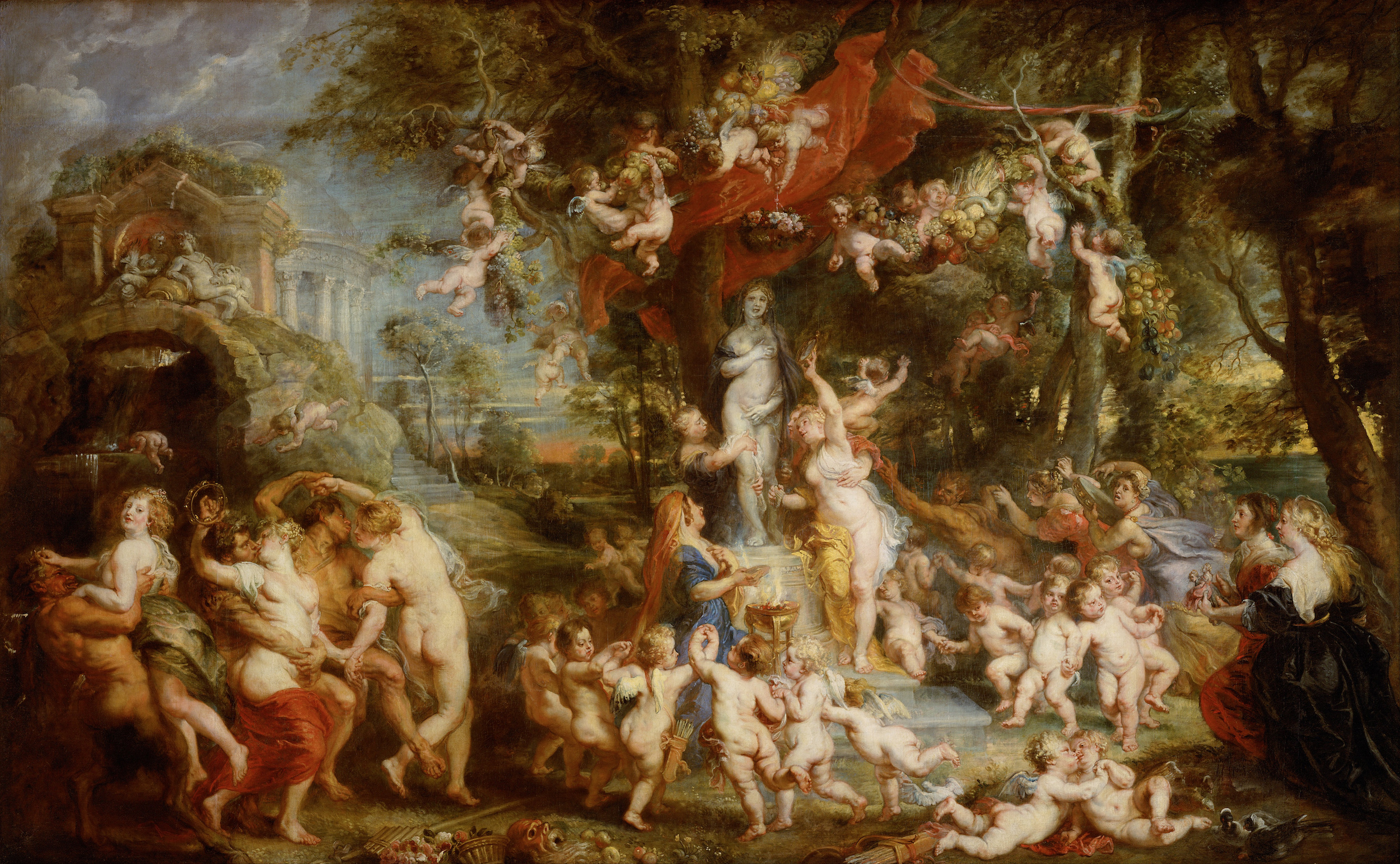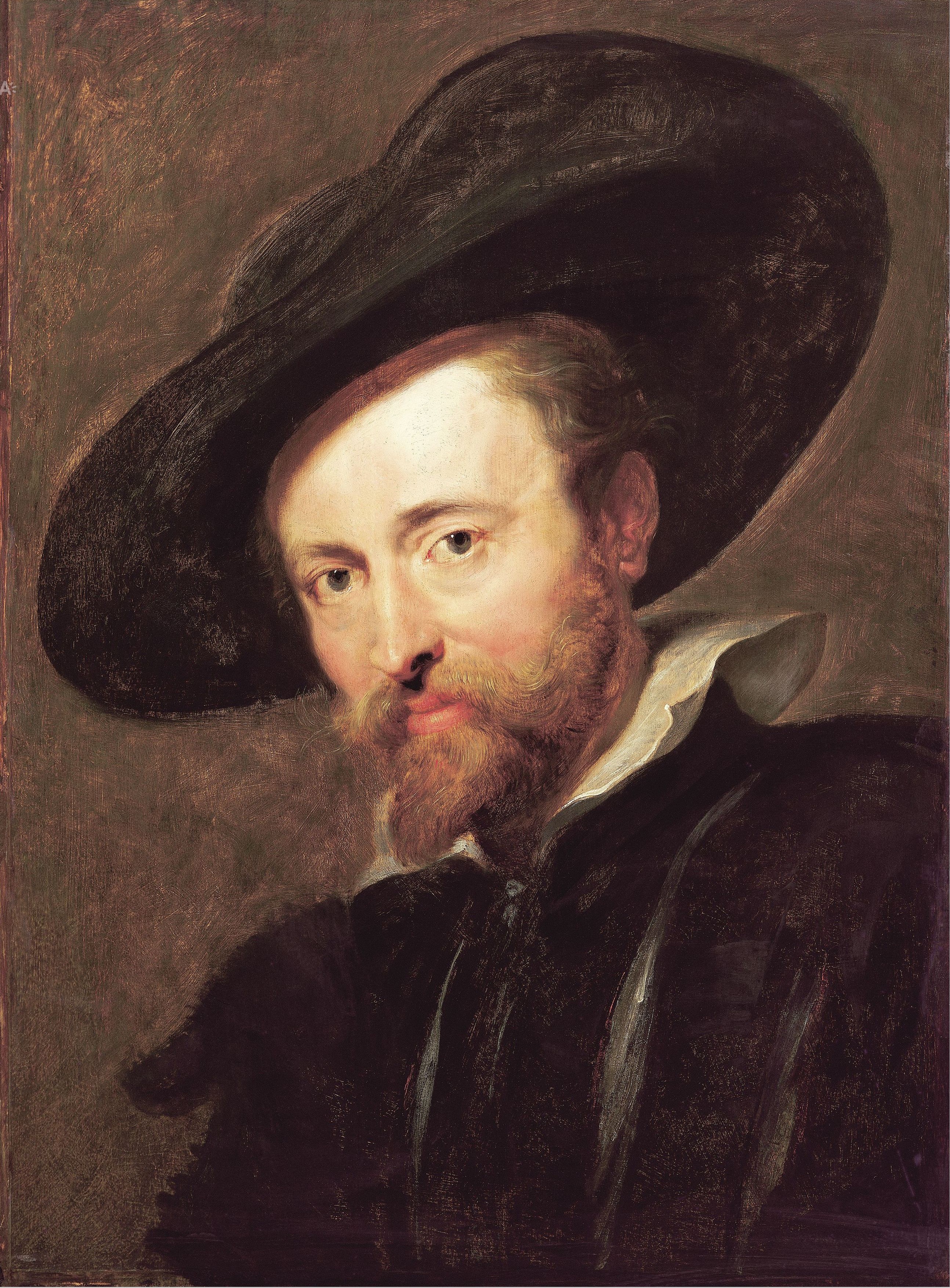This painting is strongly influenced by humanist thought. It seeks to celebrate the power of love and is inspired by two literary sources. One is from the description of a lost Greek painting that depicted nymphs decorating a statue of Aphrodite, the goddess of love, surrounded by adoring winged cupids. In 1518, this literary description inspired Titian, who was Rubens' idol and inspiration, to execute a famous painting which was later copied by Rubens. The second source was Rubens' own interest in antiquarian and archaeological themes, which led him to study Ovid's "Fasti" in which the classical poet describes the Roman feast of Venus Verticordia during which the women of Latium make sacrifices (e.g. dolls, mirrors and combs) to Venus so that the goddess may protect them from uncontrollable desire. The celebration also featured ritual ablutions both of the statue of the goddess and of the participants. Rubens pays homage to the late Titian through his free handling and the rich profusion of colours; however, the feeling of actual physical presence and the ecstatic intensity of resurrected classical antiquity are Rubens' own contributions.
In October 2017 the Kunsthistorisches Museum is opening a large exhibition of Rubens work. We are sharing this info not only because it will be a very important art event, but also because we are preparing something special with ... more info about it soon! :)


 Peter Paul Rubens
Peter Paul Rubens